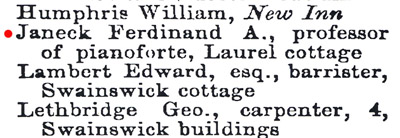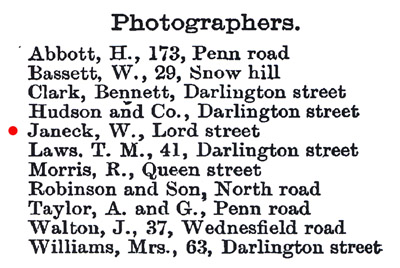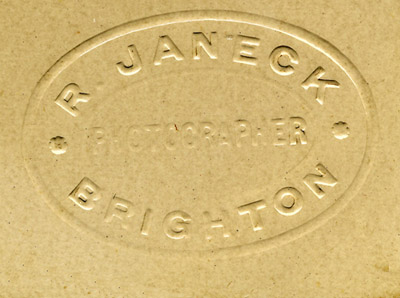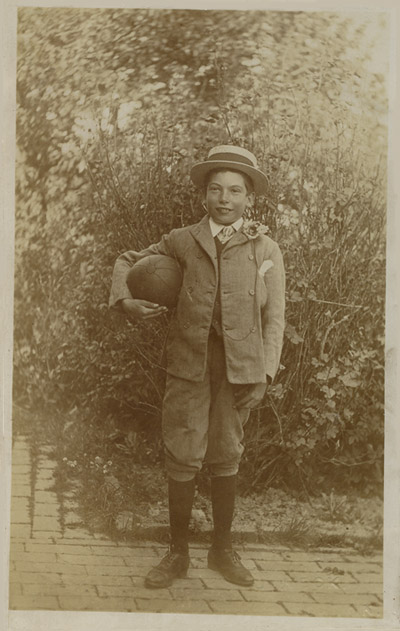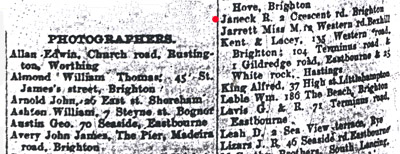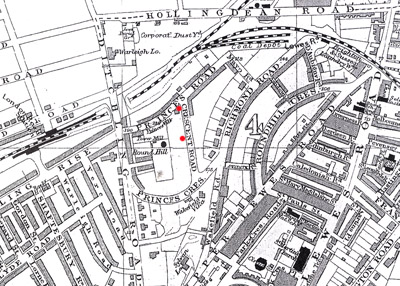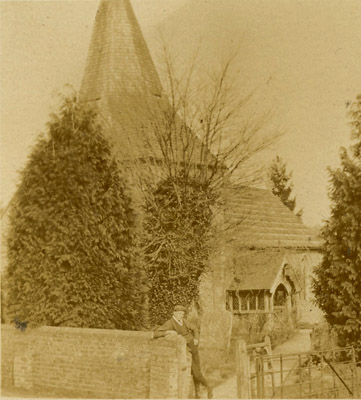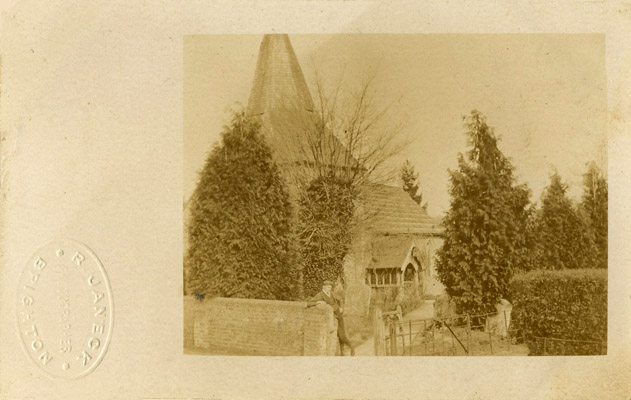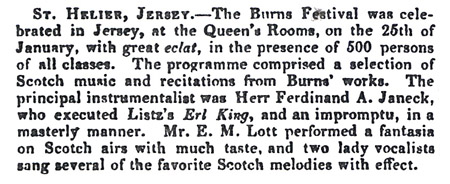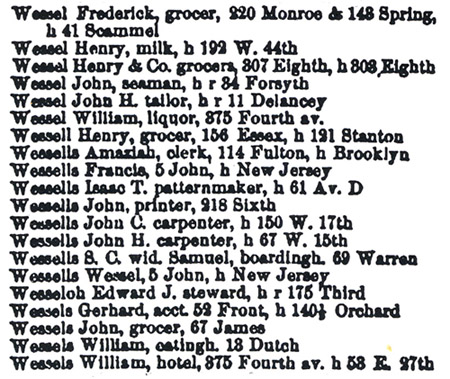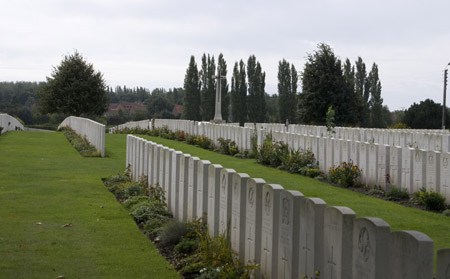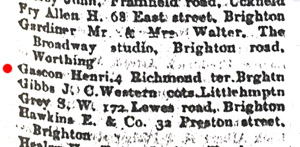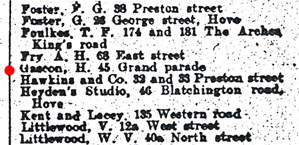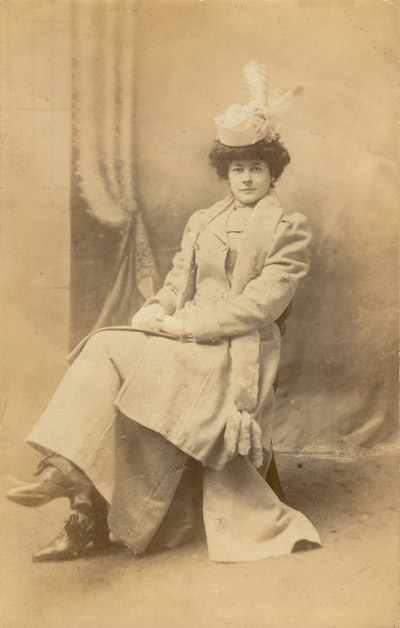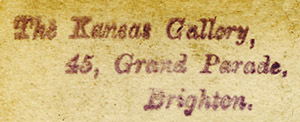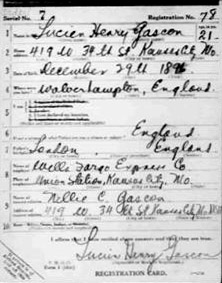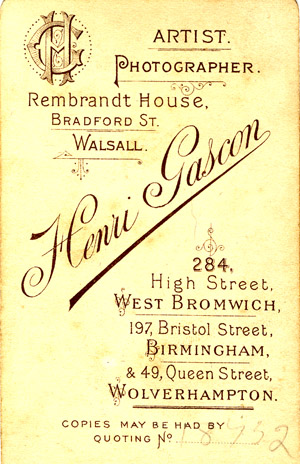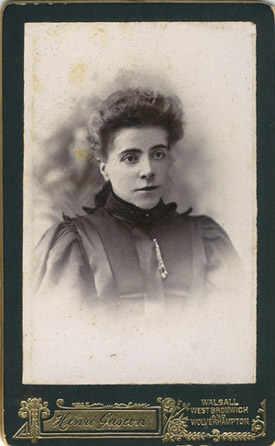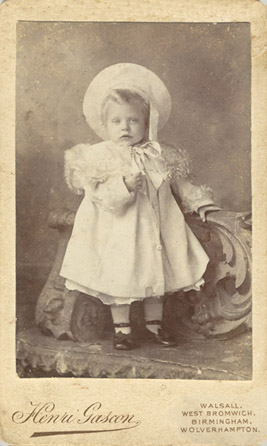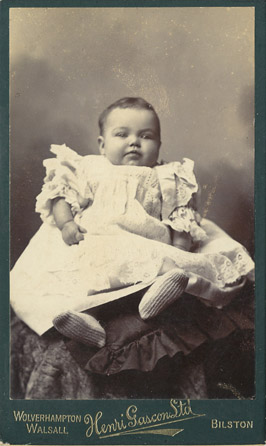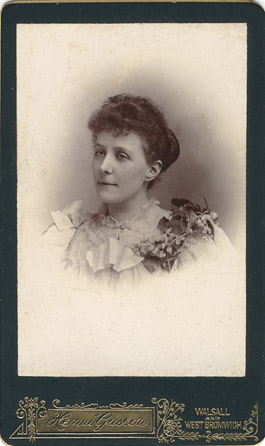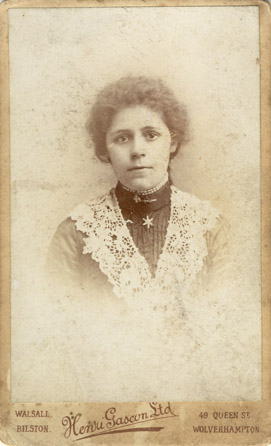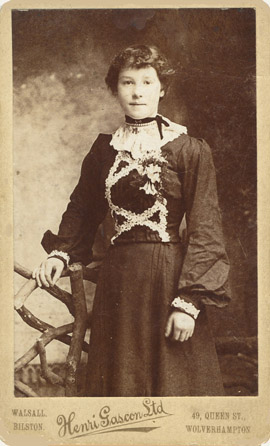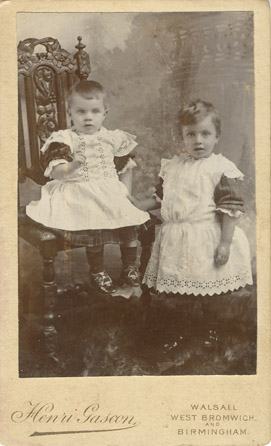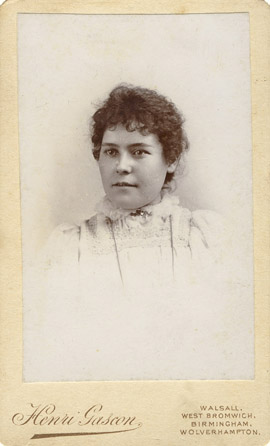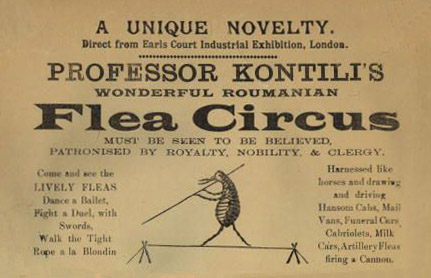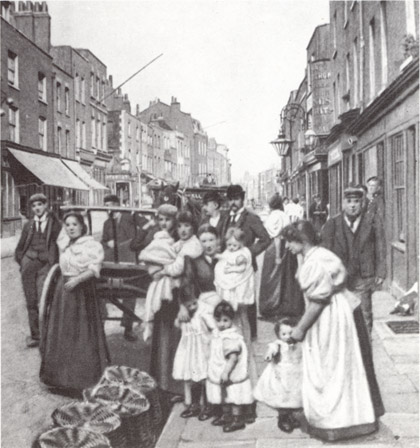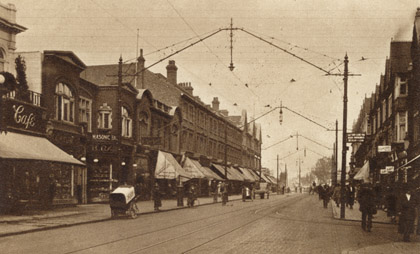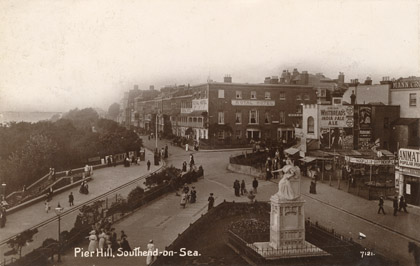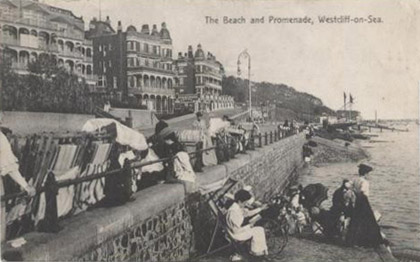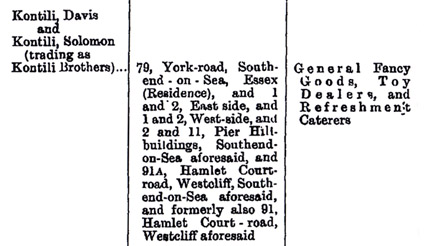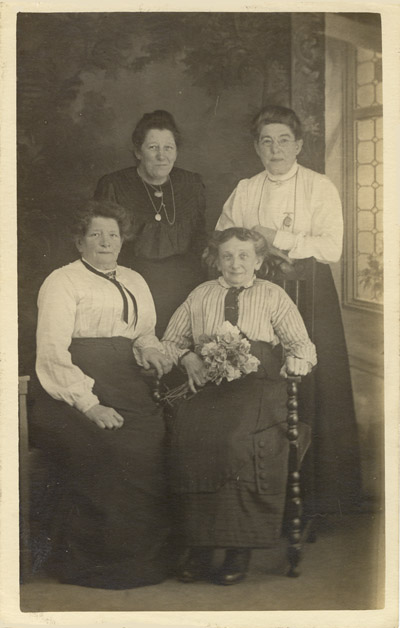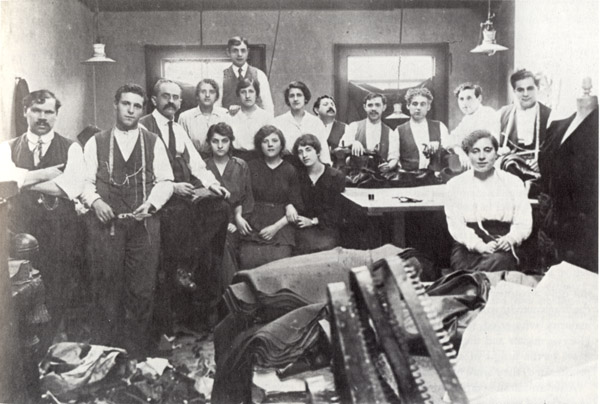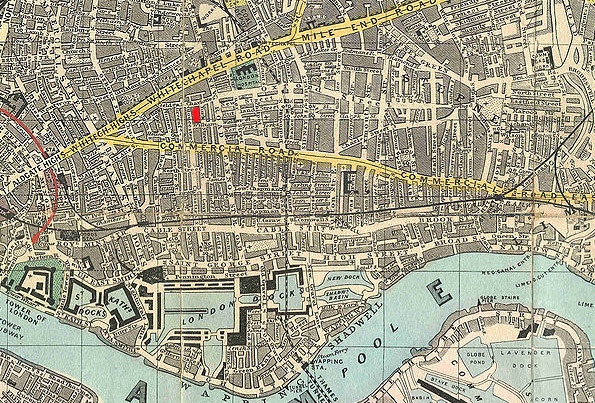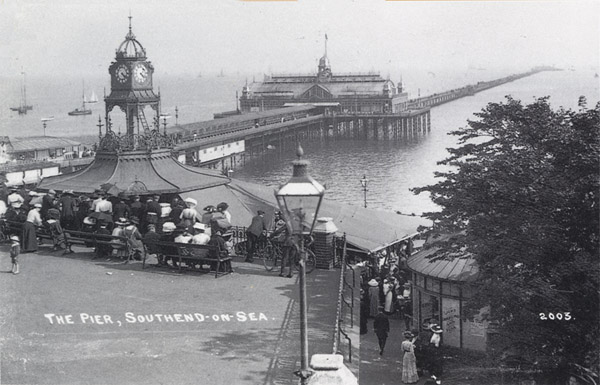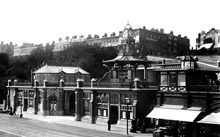|
Rudolph Albert Wessel Janeck was born in Wolverhampton, Staffordshire, in 1885, the son of Minnie (Mary) and William Henry Wessels Janeck. [The birth of Rudolph Albert Wessel was registered in Wolverhampton during the 2nd Quarter of 1885]. William Wessel Janeck, Rudolph's father, was born William Wessels (Wessel) in New York, USA, around 1856, the son of Mrs Mary Ann (Marianne) Wessels [formerly Mary Ann Hinton]. Mary Ann Hinton, Rudolph's grandmother, was born in Uley, Gloucestershire around 1832, the daughter of Anne Catherine Hinton (born c1805, Dursley, Gloucestershire). In the early 1850s, Mary Ann Hinton had married a Mr Wessels and settled in the United States, where she gave birth to two children - a daughter named Marie Emilie (Emily) Wessel(s) who was born in New York, USA, around 1854 and William Henry Wessel(s) who was born at 22nd Street Broadway, New York, USA, around 1856. After Mrs Mary Ann Wessels' husband died sometime in the late 1850s, she returned to England with her two young children and went to live with her widowed mother at Lower Swainswick, near Bath, Somerset. The 1861 census records Mrs Mary Ann Wessels, a twenty-nine year old widow and her two American-born children, nine year old Emily and six year old William, residing at Milbrook Cottage, Lower Swainswick with her fifty-six year old mother, Mrs Ann Catherine Hinton, described on the census return as a "Landed Proprietor". Staying at Mrs Hinton's cottage at the time of the 1861 census was a twenty-eight year old German musician named Ferdinand Albert Janeck (born c1832, Prussia, Germany). A relationship developed between the recently widowed mother of two and the young music teacher. In 1864, Mary Ann Wessels (who had reverted to her maiden name of Hinton) married Ferdinand Albert Janeck. [The marriage of Mary Ann Hinton and Clements Rudolph Ferdinand Albert Janeck was registered in Bath, Somerset, during the 3rd Quarter of 1864]. After her marriage to Ferdinand Albert Janeck , Mary Ann's two children took on the surname of their step father, but their legal surname remained as Wessel or Wessels. Years later, when William Wessel had married and fathered children of his own, he again adopted the surname of Janeck and his children, too, often used the surname of their German grandfather. When William Wessel became a professional photographer in the 1880s, he traded under the name of "William Janeck" and when his eldest son Rudolph Wessel followed him into the profession, his photographs carried the name of "Rudolph Janeck". When the 1871 census was taken, Ferdinand Albert Janeck, his wife Marianne (Mary Anne), and his two step children, seventeen year old Marie Emilie (Emily) Janeck and fifteen year old Willie Janeck, together with his seventy year old mother-in-law Mrs Ann Catherine Hinton, were recorded at 2 Stanley Place, Walcot, Bath, Somerset. William Janeck the Photographer In the 1870s, Ferdinand Janeck's stepson William Wessels Janeck was beginning to take a strong interest in photography. In 1874, William Janeck, then an amateur photographer in his teens, wrote to The British Journal of Photography to comment on an article about outdoor photography and offered the readers of the journal some technical advice on the treatment of photographic plates. William Wessel Janeck eventually moved to the West Midlands where he worked as a carpenter and a photographer. Sometime in the early 1880s, William Wessel Janeck married a London-born woman name Minnie or Mary (born c1854, London). A daughter named Ethel Grace Wessel was born in the Aston district of Warwickshire early in 1883. William Wessel Janeck then moved on to Wolverhampton, where Ethel Grace Wessel died early in 1885 at the age of two. [The death of Ethel Grace Wessel Janeck was registered in Wolverhampton during the 1st Quarter of 1885]. William and Minnie (Mary) Wessel went on to produce three sons - Rudolph Albert Wessel, who was born in Wolverhampton during the 2nd Quarter of 1885, Ernest Wessel, whose birth was registered in Wolverhampton under the name of Claude Ernest Gustave Wessel during the 4th Quarter of 1886, and Charles Bertram Wessel who arrived during the 3rd Quarter of 1888. Although registered under their father's legal surname of Wessel(s), all three sons generally went under the name of Janeck during their teenage years. When the 1891 census was taken, William Janeck was occupying two buildings in Wolverhampton's Lord Street. William and Mary (Minnie) Janeck were residing at 125 & 126 Lord Street, Wolverhampton, together with two of their sons, six year old Rudolph and three year old Charles. (There is no sign of the couple's middle child, four year old Claude Ernest Janeck, who was probably staying with relatives. Rudolph Wessel Janeck is entered on the census return as "Robert Janeck"). According to the 1891 census return, William Janeck and his family lived at 126 Lord Street and the adjoining building at 125 Lord Street, Wolverhampton was used by William Wessel Janeck as a photographic studio. William Wessels is entered on the census return as "William Janeck", a thirty-six year old "Photographic Artist". William Janeck is recorded at 125 Lord Street, while Mary and their children are listed at No.126 Lord Street. The Wolverhampton Red Book and Directory of 1892, records W. Janeck as a photographer in Lord Street, Wolverhampton, but does not give the number of the building. In 1901, William Wessel Janeck was residing at 36 Drayton Green, Ealing, Middlesex, with his wife and three sons. Forty-five year old William Wessels Janeck was working as a "Master Carpenter" at a local theatre (possibly at the recently opened Ealing Theatre on Ealing Broadway). William's eldest son, fifteen year old Rudolph Janeck was employed as a "call boy" at the theatre. Rudolph's two younger brothers, thirteen year old Ernest Janeck and eleven year old Charles Janeck are listed as juveniles. No occupation is given for Mrs Minnie Janeck, William Janeck's 47 year old wife. Rudolph Janeck - Professional Photographer in Brighton and Sussex Although, he was christened Rudolph Albert Wessel, William Wessel Janeck's eldest son generally went under the name of Rudolph Janeck. However, Wessel was Rudolph's legal surname and when he married Florence May Gorringe Long in the Hampshire district of South Stoneham during the 2nd Quarter of 1909, his name was entered in the Register of Marriages as "Rudolphe Albert Wessel". Rudolph's bride Florence May Gorringe Long was the daughter of Harriet Martha Gorringe and Frank Long. As the son of a professional photographer, it was natural for Rudolph Wessel Janeck to become interested in photography and to receive some instruction in the use of a camera from his father William Wessel Janeck. When Rudolph Janeck was in his early twenties he started to take photographs in the county of Sussex. Between 1908 and 1910, Rudolph Janeck was touring the villages and towns north of Brighton with his camera. A number of real photographic postcards showing scenes in and around the West Sussex village of Henfield were produced by Rudolph Janeck in 1908. One picture postcard by Rudolph Janeck features a photograph of a group of girls celebrating May Day at Henfield in 1908. Rudolph Janeck evidently visited other villages in the area, as I have in my own photograph collection a real photographic card, marked "R. JANECK, PHOTOGRAPHER, BRIGHTON", which shows St James's Church in Ashurst, a village about 2 miles west of Henfield. Another photograph by Rudolph Janeck, which depicts a steam trawler called the "Game Cock" stranded on a beach in Seaford Bay, can be dated to September 1908. Other photographs by Rudolph Janeck depict scenes in Brighton itself and several are formal group photographs taken on location in the seaside town. For instance, Rendel Williams of the Sussex Postcards Info website has a picture postcard by Rudolph Janeck, featuring a group of 18 workers in a formal pose at Brighton Railway Station.
In local trade directories published in 1909 and 1910, Rudolph Janeck is listed as a photographer at No. 2 Crescent Road, Brighton, but it appears that Janeck did not have a portrait studio at this address and, during his stay in Brighton, he was working primarily as an "outdoor photographer", travelling around the area with his camera, offering to take photographs on the spot. The few portraits by Rudolph Janeck that do survive depict subjects in their normal surroundings. (See the photographic portrait of the boy holding a ball illustrated on the right). Rendel Williams has in his collection of Janeck postcards a portrait of a young woman standing in the doorway of her home and an impromptu shot of three cloth-capped men posing with their bicycles on a country road. Rudolph Janeck is also known to have photographed churches and other buildings in the Sussex area. Rudolph Janeck's photographic cards were embossed with an oval-shaped trade mark with the simple legend "R. Janeck, Photographer, Brighton". When Kelly's Directory of Brighton, Hove and Preston was published in 1911, R. A. Janeck is listed in the Brighton Street Directory as a photographer at 38 Crescent Road, Brighton, but there is no sign of Rudolph Janeck in the census of Brighton carried out on 2nd April 1911. Joan Balch, who has a family connection with the photographer, informs me that sometime after 1911, Rudolph Janeck reverted to his previous surname of Wessel or Wessell. During their stay in Brighton, Rudolph Janeck (Wessel) and his wife Florence produced two children - Albert William (Bill) Wessel who was born in Brighton early in 1910 and Grace Wessel who was born in Brighton in 1911. Joan Balch recalls that Rudolph Janeck (Wessell) created watercolour paintings and might have worked as a stage or scene painter for a theatre at some point in his working career. After leaving Brighton, Rudolph Wessel (Janeck) settled in Lambeth, South London, where two more children were born - Irene Wessel in 1913 and Doris Wessel in 1916. |
[ABOVE] Ferdinand Albert Janeck listed as a "professor of pianoforte" at Laurel Cottage, Lower Swainswick, Bath, in the Post Office Bath Directory published by William Lewis in 1864. The year this listing appeared, Ferdinand Albert Janeck married the mother of William Wessels, Rudolph Janeck's father. After Ferdinand Janeck married Mrs Mary Ann Wessels, her son William generally went under the name of William Janeck. William Wessel Janeck's son, Rudolph Wessel (Rudolph Janeck), also adopted his grandfather's surname when he became a professional photographer around 1908.
[ABOVE] William Wessel Janeck, the father of Rudolph Wessel Janeck, listed as a professional photographer in Lord Street, Wolverhampton, in The Wolverhampton Red Book and Directory published in 1892.
[ABOVE] The trade plate of Brighton photographer Rudolph Janeck (c1908). The oval trademark, which reads simply "R. JANECK- PHOTOGRAPHER-BRIGHTON" was impressed in the wide border of a postcard view of a West Sussex church. [See the postcard of Ashurst Church below left].
[ABOVE] A postcard portrait of a boy standing in a garden and holding a ball, photographed by Rudolph Janeck (c1910). This real photographic card is impressed "R. JANECK, BRIGHTON" in the bottom right-hand corner.
[ABOVE] Rudolph Janeck recorded as a professional photographer at 2 Crescent Road, Brighton in the Trades Section of Kelly's Directory of Sussex, compiled during 1908 and published in 1909.
|

